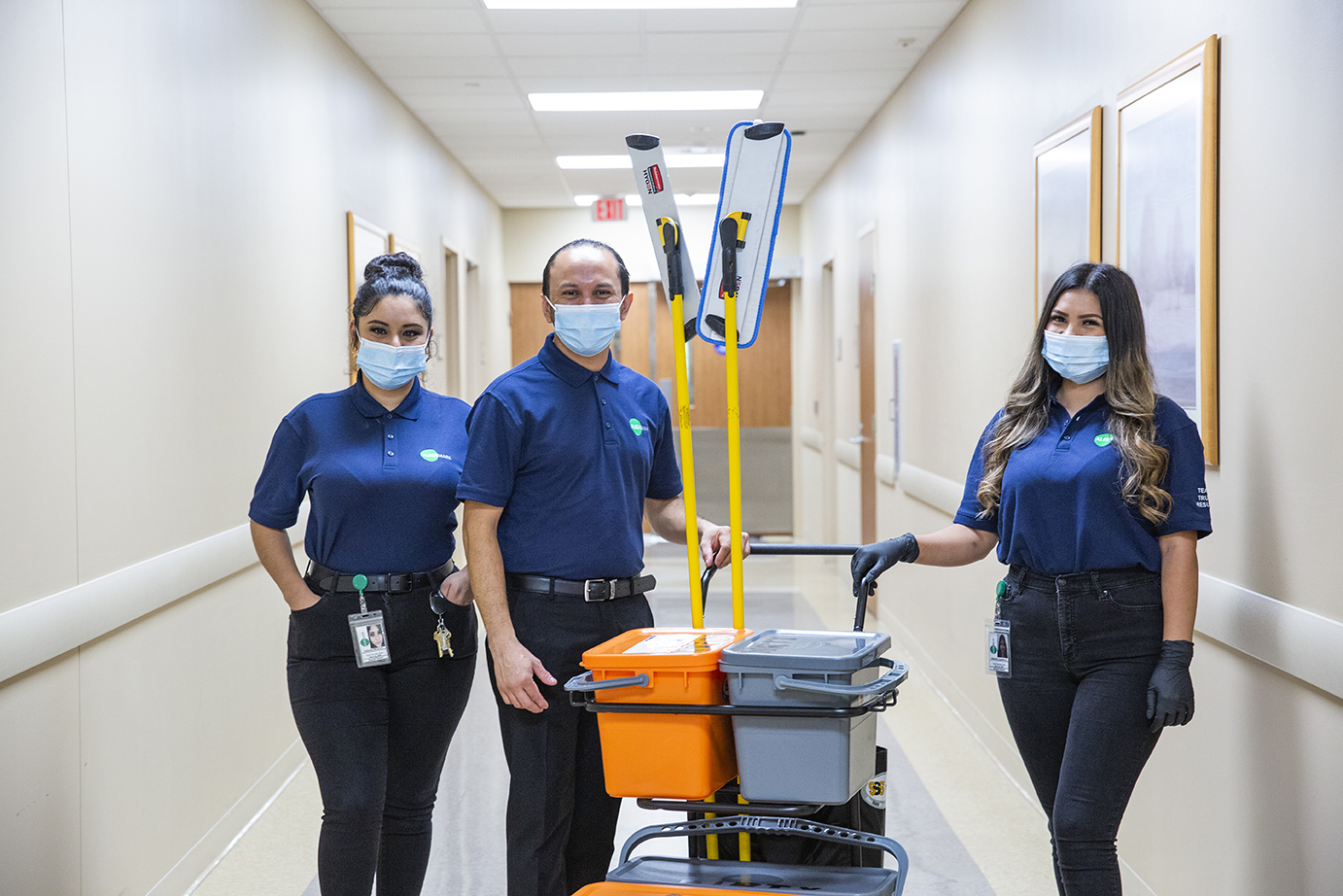The Critical Role of Hospital Cleaners in Healthcare
Training and Education: Building Expertise in Hospital Cleaning
Hospital Cleaning Courses
-
Infection Control: Understanding how to prevent the spread of pathogens in a healthcare setting.
-
Use of Cleaning Agents: Proper handling and application of disinfectants and cleaning solutions.
-
Personal Protective Equipment (PPE): Training on the use of PPE to protect against exposure to hazardous substances.
-
Waste Management: Procedures for handling and disposing of medical and biohazardous waste safely.
On-the-Job Training
Daily Responsibilities of Hospital Cleaners
-
Patient Room Cleaning:
-
-
Thorough cleaning and disinfection of patient rooms, focusing on high-touch surfaces such as bed rails, light switches, and call buttons.
-
-
Operating Room Sterilization:
-
-
Maintaining the sterility of operating rooms by adhering to strict cleaning protocols and using appropriate disinfectants.
-
-
Public and Staff Areas:
-
-
Cleaning common areas such as waiting rooms, lobbies, and staff lounges to ensure they are hygienic and welcoming.
-
-
Equipment Sanitization:
-
-
Regular cleaning and disinfection of medical equipment to prevent cross-contamination between patients.
-
-
Emergency Spill Management:
-
-
Quick response to spills involving bodily fluids or hazardous substances to minimize health risks.
-
-
Waste Disposal:
-
-
Proper disposal of medical and biohazard waste in compliance with health regulations and facility protocols.
-
-
Cleaning:
-
-
The removal of visible dirt, debris, and organic matter from surfaces using detergents and water. This step is essential for preparing surfaces for disinfection.
-
-
Disinfection:
-
-
The application of chemical agents to kill bacteria, viruses, and other pathogens. Special attention is given to high-touch areas and surfaces that are frequently used by patients and staff.
-
Technological Advancements in Hospital Cleaning
-
Electrostatic Sprayers: Devices that evenly distribute disinfectants, ensuring comprehensive coverage of surfaces.
-
UV Light Systems: Equipment that uses ultraviolet light to sanitize rooms and equipment by destroying pathogens.
-
Robotic Cleaners: Automated systems that clean floors and other surfaces, reducing the workload on human staff.
The Demand for Hospital Cleaning Professionals
-
Increased Emphasis on Infection Control: The COVID-19 pandemic highlighted the critical role of cleanliness in preventing disease transmission, leading to a greater appreciation for the work of hospital cleaners.
-
Expansion of Healthcare Facilities: As new hospitals and clinics are built, the need for cleaning staff continues to grow.
-
Aging Population: With an older population requiring more medical care, healthcare facilities are busier than ever, necessitating increased cleaning efforts.
Job Application and Recruitment for Hospital Cleaner Positions
Recruitment for hospital cleaner positions is typically managed either through hospital environmental services departments or by specialized companies contracted by healthcare facilities. Individuals interested in pursuing a career as a hospital cleaner generally begin the process by submitting a detailed application. This application often requires candidates to provide proof of their educational background, relevant certifications, and any prior experience in similar roles.
For those searching for “housekeeping jobs near me,” local hospitals often present a variety of opportunities in this field. Entry-level positions usually necessitate a high school diploma or an equivalent qualification. Once hired, new employees receive comprehensive on-the-job training designed to equip them with the specific skills and knowledge needed to maintain the high standards of cleanliness and hygiene required in healthcare environments. This training may cover topics such as the proper use of cleaning equipment, adherence to safety protocols, and effective communication with hospital staff and patients.
The Impact of Hospital Cleaning: Statistical Insights
Hospital cleaning has a significant impact in many ways:
|
Impact Category
|
Data
|
Data Source
|
|
Reduction in Hospital-Acquired Infections
|
Approximately 75,000 fewer cases of hospital-acquired infections annually
|
Centers for Disease Control and Prevention (CDC)
|
|
Increase in Cleaning-Related Jobs
|
Approximately 370,000 hospital cleaning jobs nationwide
|
U.S. Bureau of Labor Statistics
|
|
Improvement in Patient Satisfaction
|
Patient satisfaction increased to a score of 80 out of 100 following cleanliness improvements
|
Hospital Consumer Assessment of Healthcare Providers and Systems (HCAHPS)
|
|
Savings in Healthcare Costs
|
Approximately $3 billion saved annually in costs related to hospital-acquired infections
|
Association for Professionals in Infection Control and Epidemiology (APIC)
|
Challenges and Rewards of a Hospital Cleaning Career
-
Physical Demands: The job often requires long hours of standing, bending, and lifting.
-
Exposure to Hazards: Cleaners are frequently exposed to biohazard materials and infectious agents, necessitating strict adherence to safety protocols.
-
Stressful Environments: Working in healthcare settings, particularly during crises, can be emotionally taxing.

